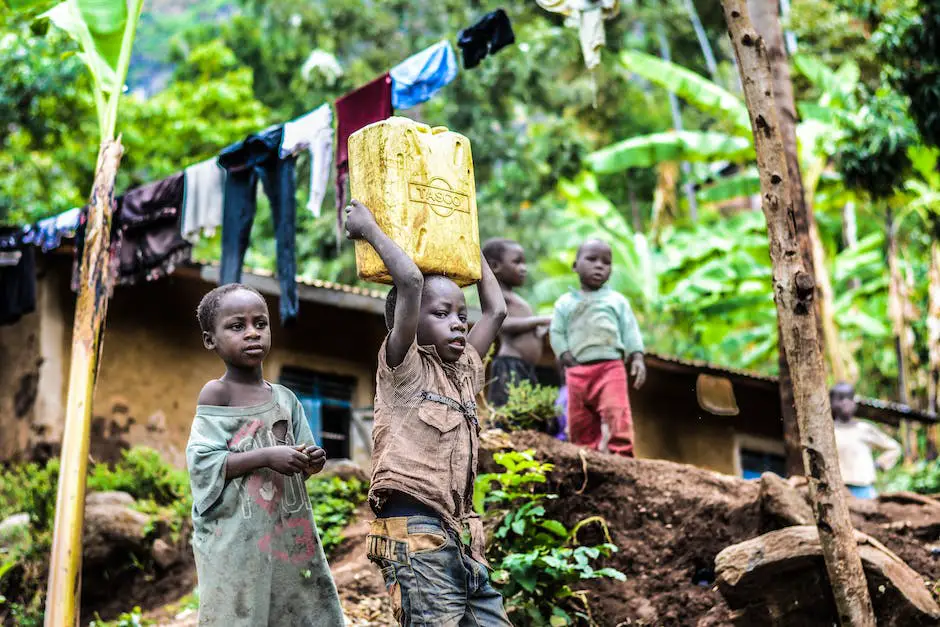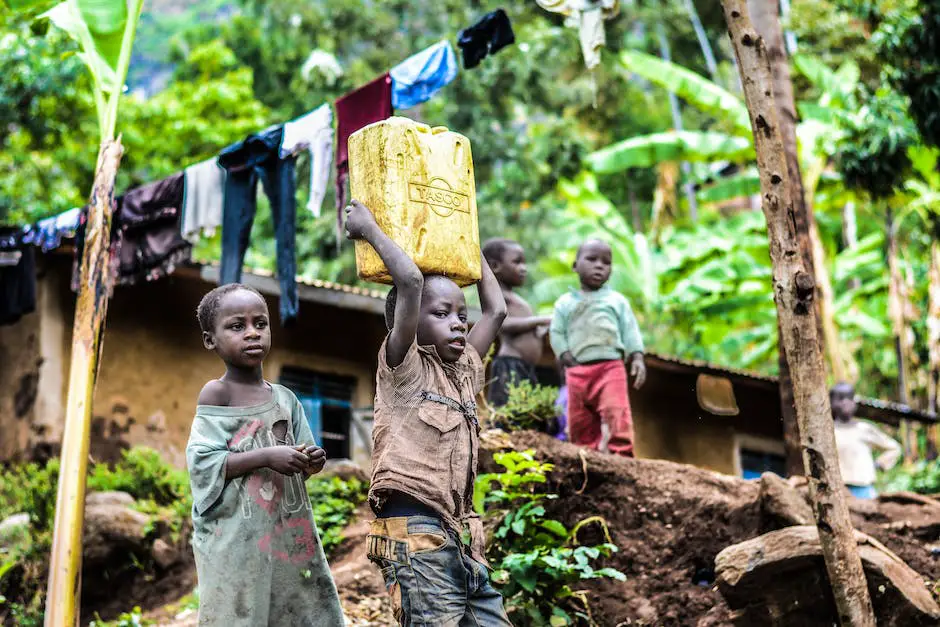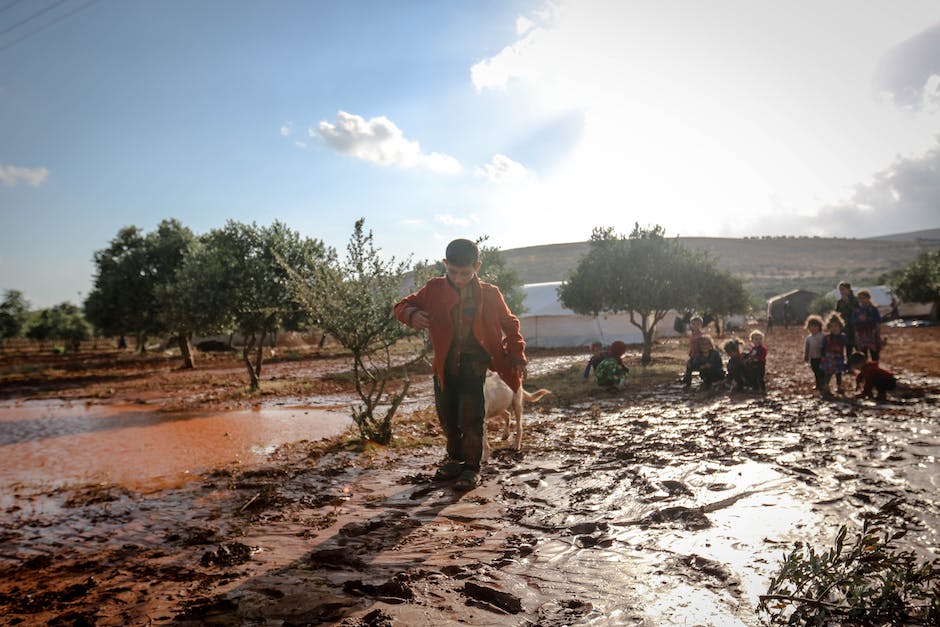Many people believe that apple trees cannot grow in wet soil, but this is not necessarily true. While apple trees do prefer well-drained soils, they can tolerat
Yes, apple trees can grow in wet soil if the soil is well-drained. If the soil is poorly drained, the roots of the tree will rot, causing the tree to die.
What type of fruit tree grows well in wet soil?
Persimmons are a type of fruit that tolerates heavy soil and requires consistent moisture throughout the growing season. They are best suited for areas with moderate winters and mild summers.
It is best to plant your tree when the ground is dry or only damp. Trees that aren’t suited for wet soil can drown. It’s easier for any plant to drown in a wet soil area than elsewhere. Before watering your tree, test the soil up to a few inches.
Which apple rootstock is best for wet soil
MM111 is a semi-vigorous rootstock that is known for its ability to grow in both heavy and light soils and to tolerate drought and damp conditions. This rootstock produces trees that are somewhat larger than those produced by MM106.
Fruit trees play an important role in the water cycle by absorbing water from the ground and releasing it into the atmosphere through evapotranspiration. Some fruit trees, such as those listed above, are particularly efficient at this process and can help to regulate the local water supply.
What can I grow in waterlogged ground?
If you’re looking for plants that will thrive in wet soils, here are six of our top picks:
1. Liquidambar styraciflua – also known as sweet gum, this tree is tolerant of wet conditions and can even grow in swampy areas.
2. Cornus alba – a shrub that is commonly used for hedges and screens, it is very tolerant of wet soils.
3. Hydrangea paniculata – a beautiful flowering shrub that does well in moist soils.
4. Phyllostachys – a genus of bamboo that is known for its tolerance of wet conditions.
5. Hosta – a popular plant for shady gardens, it is very tolerant of wet soils.
6. Zantedeschia aethiopica – also known as calla lily or arum lily, this plant is tolerant of wet conditions and can even grow in marshes and bogs.
It is important to water young apple trees frequently and deeply in order to ensure their health and growth. In our orchard park, we water our newly planted trees up to three times a week, with three large buckets of water each time. This amounts to approximately 15 gallons of water per week for each young tree.
How wet is too wet for planting?
If you want to check if your soil is ready for planting, grab a handful and see if you can form it into a ball. If the soil is too wet, the seeds will rot. If it crumbles through your fingers, it’s ready to go.
Trees and shrubs can be successfully planted in wet or clay soils if certain steps are taken. Firstly, planting pits should be excavated larger than usual to accommodate the slow percolation rate. Excess water should be removed from the bottom of the planting pits and directed to a lower elevation by using French drains or perforated plastic (PVC or ABS) pipes. amendments such as sand, gravel, and organic matter can also be added to the planting pits to improve drainage.
What happens if you plant in wet soil
Working wet soil will pack soil particles tightly, leaving less room for water and air to penetrate. Compacted soil also makes it more difficult for plant roots and gardening equipment to move through the soil.
The 9-22 End apple tree is an extremely hardy tree that is suitable for cold climates up to zone 1. It has been growing successfully for several years in the Peace River Country of Northern Alberta, and Fairbanks, Alaska.
Do cherry trees like wet soil?
Cherry trees require well-draining soil in order to grow and produce fruit properly. They are able to establish easily in sandy-loam or even rocky soils, but struggle in heavy clay soils. This is also true for cherry trees in the home garden or orchard. For best results, make sure your cherry tree is planted in a location with good drainage.
If you are planting a fruit tree in an area where poor drainage is or could be an issue, it is best to plant the tree on a mound. These mounds are typically 6- to 12-inch raised pyramids of soil piled at the bottom of the planting hole, and they ensure that water runs away from the tree’s roots and crown. This will help to prevent the tree from becoming waterlogged and will also help to keep the fruit clean and free of mud.
What tree will soak up water
Willows absorb a lot of water, making them ideal for wet areas such as streams, lakes, and wetlands. Their leaves and roots are specially adapted to absorb all of the excess water.
They like the soil to hold a good supply of water, especially when the fruits are developing in summer, but not so much water that the soil stays constantly soggy or wet, which can cause problems with the roots. They are tolerant of heavy clay soils if drainage is good.
What trees cope with flooding?
Willow, Alder, Poplar, and Swamp Cypress are all trees that thrive in wet, waterlogged conditions. Once they are established, they can tolerate these conditions for several months when dormant. This makes them ideal trees for locations that experience a lot of rain or flooding.
Hello Everyone,
There are a few fruit trees that can tolerate wet feet for a while, including persimmon, jack fruit, canistel, mulberry, banana, and pepino. Our trees do just fine in our seasonal swamp, where it can be wet for much of the year. As long as they have some shade from other trees, they will do just fine.
What plants grow best in soggy soil
Perennials are plants that live for more than two years. Some of the best perennial plants for moist soil include cardinal flower, false goat’s beard, hosta, Japanese primrose, marsh marigold, queen-of-the-prairie, rocket ligularia, and royal fern. Each of these plants has unique features that make it well-suited for moist soil conditions.
If your extended rain spouts go out to a rain garden, you can include these water-loving plants:
Sedges (Carex)
Bluestar (Amsonia)
Turtlehead (Chelone)
Cardinal flower (Lobelia cardinalis)
Black-eyed Susan (Rudbeckia fulgida)
Swamp milkweed (Asclepias incarnata)
Swamp mallow (Hibiscus moscheutos)
These plants will help to filter and uptake excess water from your rain garden, helping to improve water quality and reduce flooding.
What does an overwatered apple tree look like
If your plant’s leaves are wilting, yellowing, or otherwise not looking as healthy as they should, it could be a sign that you’re overwatering them. Watch for leaves that are fragile and break easily – this is a sign that there is too much water present.
Apples are self-unfruitful, so you need to plant at least two different apple tree varieties within 50 feet of one another for a good fruit set. Some apple varieties, such as Golden Delicious, will produce a crop without cross-pollination from a second variety.
Conclusion
apple trees can tolerate wet soils better than many other fruit trees, but they still prefer well-drained soils. Apple trees will not tolerate standing water for more than a few days. If the water table is close to the surface, the roots of apple trees will be constantly exposed to wet soils, which can lead to problems.
While apple trees can tolerate wet soil to some degree, it is not ideal. Wet soil can lead to issues such as root rot and it can be difficult to impossible to grow a healthy tree in extremely wet conditions. If you want to grow an apple tree, it is best to choose a location with well-drained soil.
Jackson Hill is a passionate arborist with years of experience in the field of trees. He developed his fascination with trees at a young age, spending countless hours exploring the forests and climbing trees. Jackson went on to study arboriculture and horticulture at Michigan State University and later earned a degree in forestry from the University of Michigan.
With his extensive knowledge and expertise, Jackson has become a trusted authority on trees and their impact on the environment. His work has helped shape the field of arboriculture and he continues to be a leading voice in the industry.
